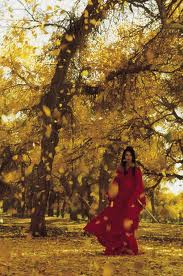Ever heard anyone say subtitled movies are boring or hard to follow? I have many times and I often wonder why such a reaction to a subtitled movie occurs when the subtitled movie is exactly to the tastes of the person who said just that. But of further consideration I can see why.
The mostly likely reason why someone says subtitled movies are boring or hard to follow is because they're focusing almost entirely on the words flashing on the screen and hardly picking up any of the action, colour or sound that's otherwise involved. In other words, they're forced to read a book on screen and not even at their own pace. They're forced to read onscreen at the pace set by the movie and that can often be faster than liked, leading to the action of reading being done under pressure. And as you know, many things done under pressure are chores more then entertainment. Such a chore as reading a movie script as fast as possible is made even harder when the text is intermittently cut due to the layering of white on white or yellow on anything yellow toned.
I can completely understand why a subtitled movie can be boring or hard to follow if the above is the case. Saying it is boring or hard to follow for any other reason, I'm not so understanding.
In fact, I'd go so far as to say that if you're turning away from subtitled movies due to a difficulty in reading the subtitles then a little practice is probably in order. There are far, far too many fantastic movies made in other languages to give up on foreign language movies altogether. And believe me, most remakes loose a lot in translation - of quality, of language, of acting skills and of originality amongst other things. I cannot tell you how many times I've been disappointed by remakes. There are very, very few gems in the mix.
So here's what I'd suggest. Start by learning to scan the subtitles with a quick glance while taking in the pictures and sounds. Not every clue as to what is going on is set only in the text so flick your eyes off it and then back again - repeat. Picking up that there is an argument going on is more often indicated by facial expressions and tone of voice than the words actually said. And sometimes you only need to know the topic of the argument to get the gist of the change in plot development.
If you practice scanning and flicking your eyes about you'll be able to gradually increase your ability to take in the whole movie. It might be like gaining a general impression at the beginning but it really only will take a few movies for you get acquainted enough with the process of flicking your eyes about and dividing your focus to pick up more text and more action. Essentially what you're doing is learning a new way to read and watch a story so don't give up at one subtitled movie. That's just a waste. You never gave up at just one book or just one movie so why do so for this?
If you manage not to give up and pick up the skill you'll be able to watch foreign language movies in their original glory.
These will get you interested:
Amelie
I want strawberries now.
Island Of Lost Children
Recognise him?
The Delicatessen
One of the most beautiful scenes I've ever seen in a movie.
Taxi
Chock full of car chases.
Let The Right One In
About as spooky as they come.
Nosferatu
Beauty meets beastliness. You'll understand this only by watching Nosferatu move.
Immortal
Odd but intriguing sci-fi/fantasy mix.
Crouching Tiger Hidden Dragon
Awesome action scenes and a strange plot.
Hero
Brilliant colours, great action and a fun plot.
Kwaidan
Strange and eerie.
Nightwatch and Daywatch
Complex, brilliant scenes, fast paced and beautiful. More than a little different.
Oldboy
Brutal.
Zatoichi
Brilliant swords play, beautiful sounds, highly comedic and brutal in parts.
Plenty more where these came from!
Some are from books but all of the book to movie adaptations listed are a case of at least see these as well as read the books.




































